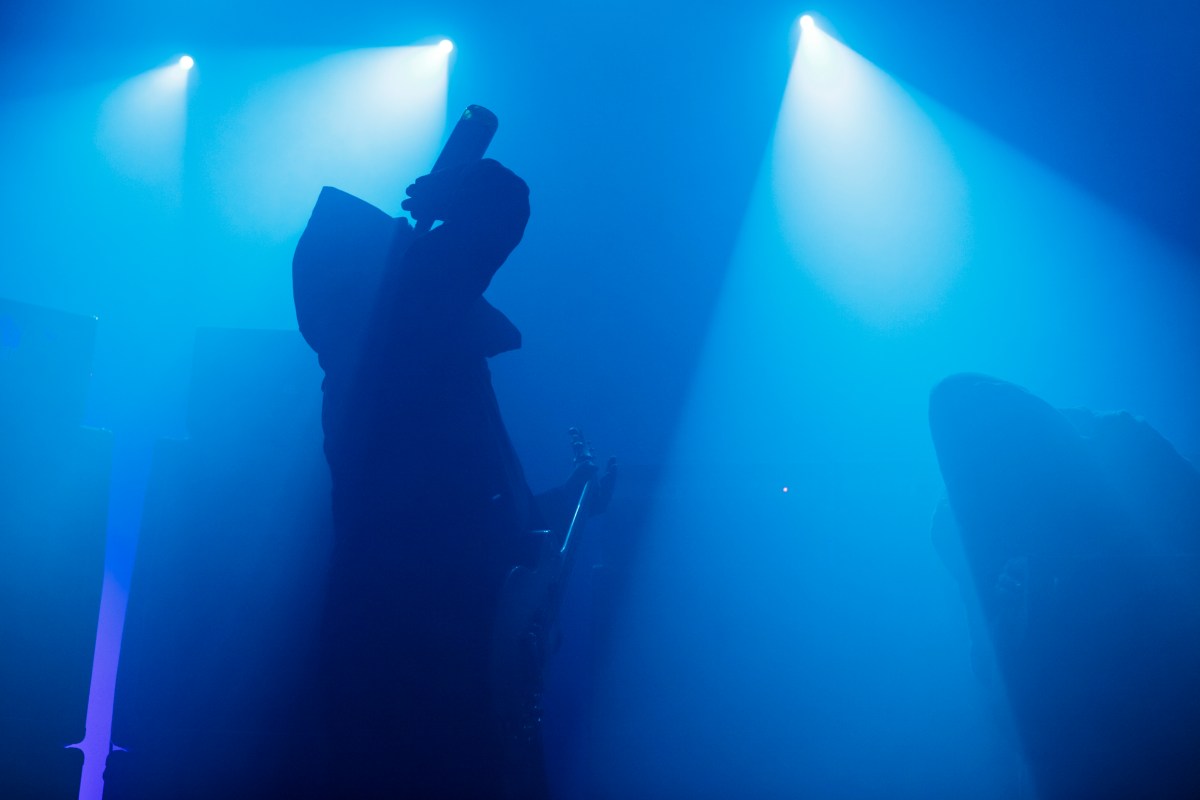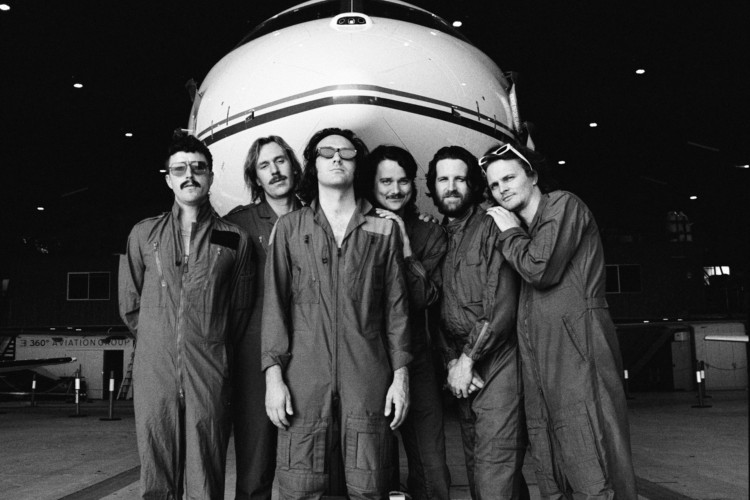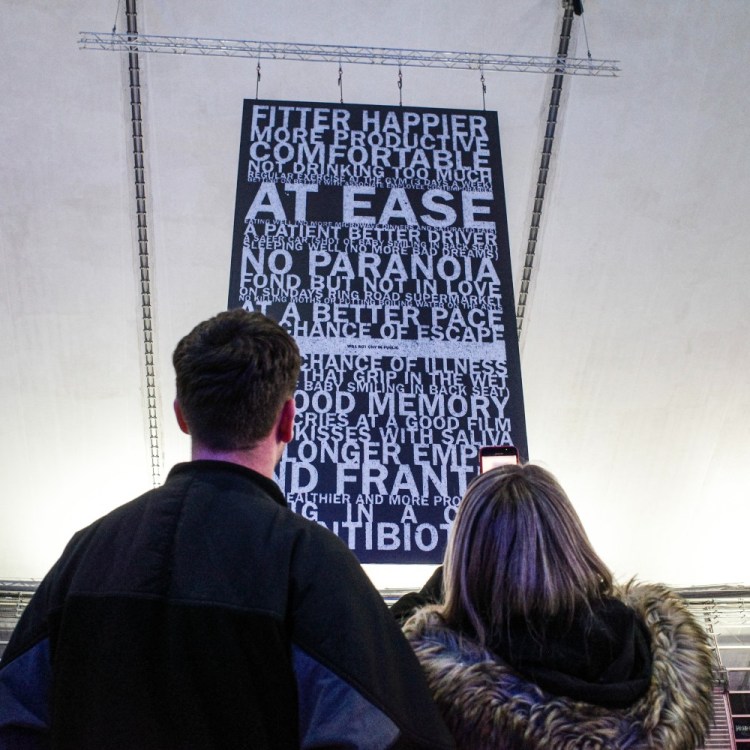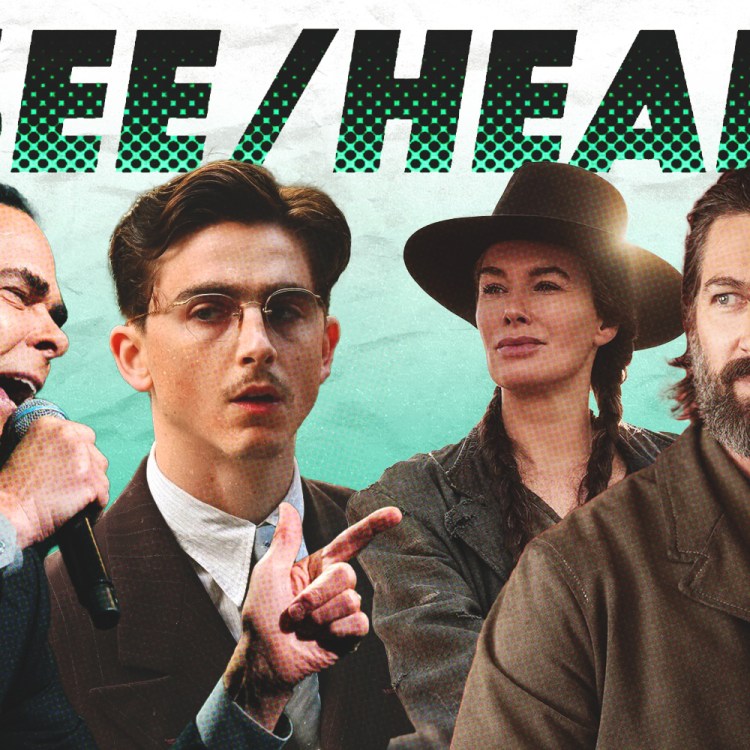Let’s start here: Life Metal, the new album by Sunn O))), the kings of buttercream mesmermetal, is likely to be one of the most startling, original and engaging albums you’ve heard in a long time. In fact, I’d personally go as far to say it’s one of the best rock albums of the century.
For many listeners with an open mind, Life Metal will be their train to Hogwarts. See, you have to believe that the platform is there, but once you go to that place, you find a life-transforming world that is full of wonder and mystery, utterly new and magical but also completely familiar and welcoming. All you have to do is believe that rock ’n’ roll is something more than the silhouette of four guys with thin legs that’s been stapled to your brain. Deep down, you have always known that rock ’n’ roll is that dream of the eternal god-chord wrapped around you like a baby blanket and a death shroud, a guitar chord that sounded like a rainbow looked.
You have just been waiting for something that sounded exactly like that dream.
To quote Nyingma Buddhist author and scholar Anam Thubten,”It is beautiful when we truly realize that we are born in this very moment for the first time in human history.” What kind of music, much less gigantic freaking guitar music, can make you feel that your whole relationship with music is being reborn?
Sunn O))) — pronounced “Sun” and named for a particularly loud and growl-some brand of guitar amplifier — are from the Pacific Northwest, and have been steadily releasing remarkable LPs, EPs and collaborations since the late 1990s. These releases regularly blur the line between ambient music and the most aggressive waves of heavy metal imaginable. Perhaps if you imagine elevator music in the fortress tower of the Dark Lord Sauron, well, maybe that’s a good place to start. On the other hand, if you feel, as I do, that the great chordal fudge slabs of Sabbath, Sleep, Fu Manchu or even Dave Davies, Pete Townshend and Link Wray are a luxurious stairway to a very loud heaven, then you’ll understand how Sunn O)))’s wall of sound can also be an ecstatic, almost hallucinogenic place.
This isn’t the heavy metal of whangy-doodle solos, Berklee students going whappa-whappa-whee-whee in the aisles of Guitar Center, or long-haired singers asking you to squeeze their lemon. This is just the good parts of heavy metal: the rise and decay of the atomic fireball of the endless chord, the riff without end.
Life Metal’s absolutely rapturous, engaging, slow-moving tsunami of electric velour sings and sighs and screams with an infinite amount of harmonic voices spiraling up to heaven and down to hell and linking both like a Mobius strip. Full of dynamic and constancy, it is always shifting, thereby never allowing the listener to lose interest, even as they lose themselves in the drone of endless, absurdly low-tuned guitars, a few well-placed harmonic peals and woofy bass mantras, and a chant or two.
What makes Life Metal especially remarkable in the extensive and fascinating Sunn O))) catalog is both its sense of completeness as an album and its sound. It’s as if Sunn O))) have finally perfected the guitar-chord as all-enveloping planetarium Milky Way star-spray. Life Metal is both in your face and all around you. It sounds rich, clear, absolutely enveloping and sensual. Unlike earlier Sunn O))) recordings, the sound does not lie “flat” or sibilant when it emerges from the speakers or the headphones; instead, this is rich with planetarium-like dimension — it’s loaded with dynamic, not distortion — and you are occupied, swallowed whole and transported.
I also suspect — or, at least, hope — that Life Metal may emerge as the platform for profound influence. In this sense, Life Metal may be to the future what Satie’s maximum minimalism was to the past: a profound, shocking, beautiful work that will be referenced for centuries.
But more recently than Satie, composers working in extreme avant-garde and minimalist forms have significantly influenced mainstream rock and pop. Artists working from the 1950s through today, like La Monte Young, Terry Riley and Glenn Branca, are the éminence grises of the future, the curators of new directions in rock. To be a shade more specific, La Monte Young is the minimalist composer whose drones, saws and stomps profoundly influenced the Velvet Underground (and, in turn, every band influenced by the VU; his work, in fact, is echoed, both structurally and conceptually, in Life Metal). Terry Riley’s pretzel-twists of shifting, intersecting riffs, repetitions, delays and pulses were incorporated into the music of the Dead, Radiohead, Kraftwerk and the Who (Pete Townshend saluted him in “Baba O’Riley”), and a little more recently, Glenn Branca’s shrieking quadruple-strum guitar techniques and orchestral take on the electric guitar were adapted by his disciples Sonic Youth, and have since been incorporated into the vocabulary of an entire generation of rock bands.
I strongly suspect — or hope — that Sunn O))) will have the same influence on the future of rock and pop.
Let me put aside the fluffy words for a moment, and address a simple question: Tim, you’re stopped by a stranger on the F train. They can’t help noticing this odd hum and roar coming out of your earbuds. How do you describe this sound, this Life Metal?
“Well, imagine the opening bit to Led Zeppelin’s ‘In the Evening’ played by Tony Iommi in incredibly slow motion for about an hour. Friend, it is the rock album you dreamt about in your crib, when the only rock you knew was the moth fluttering its wings desperately in the globe light on the ceiling, fighting the eternity of death. It is the sound of all 360 members of the Mormon Tabernacle Choir trapped in a glowing opium loop trying to explain Black Sabbath to God. Is this your stop?”
This mushroom cloud of whoooang, almost completely detached from the trivial demands of vocals or the limiting whap of drums (there are no audible drums on Life Metal, and only one significant detectable vocal, an effective tribal incantation on the first track), was certainly what Neil Young was trying to achieve with Arc in 1991. Only he didn’t even come close, because he was too stuck in tradition, to the idea of “band” (note: Neil Young has to hear this album). Branca got very close, too, and lord knows Sleep allude to it (though they remain, more or less, vaguely confined to a song format). Lou Reed’s Metal Machine Music pretended to access this place, but Lou wasn’t living in it, he was just a dilettante, visiting. To find those who have actually reached this harmonic Shambhala, you’d have to seek out the aforementioned La Monte Young, or the endless, spiraling trombone ensemble pieces of Stuart Dempster. In fact, Dempster’s Underground Overlays from the Cistern Chapel (1994) is probably the album that comes the very closest to matching the hypnomesmeric soar, drone and ecstasy of Life Metal.
If you are already familiar with Sunn O))), it’s my opinion that Life Metal is the best of their many, many releases (though their 2013 collaboration with Scott Walker, Soused, remains an achievement of nearly Pet Sounds-like invention and depth). But more significantly, if Sunn O))) are unknown to you, Life Metal may liberate you to think of heavy metal, and the transformative and meditative potential of the loud, long and fat electric guitar chord, in an entirely new way.
This article appeared in an InsideHook newsletter. Sign up for free to get more on travel, wellness, style, drinking, and culture.



















